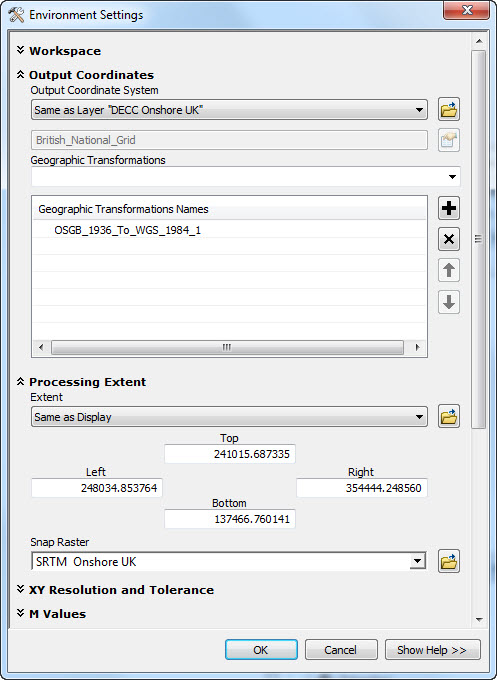


Preserve Shape is especially useful in cases in which a line or polygon boundary is digitized as a long, straight line with few vertices. When the Preserve Shape parameter is checked, output features that more accurately represent their true projected location are created. In this case, the output feature class will be written to the geodatabase containing the feature dataset. This is because feature classes in a feature dataset must all have the same coordinate system. When a feature class in a feature dataset is used as input, the output cannot be written to the same feature dataset. To project only selected features, consider using the Copy Features tool to create a temporary dataset, which will only contain the selected features, and use this intermediate dataset as input to the Project tool. Selection and definition queries on layers are ignored by this tool-all features in the dataset referenced by the layer will be projected. Learn more about geoprocessing environments For example, the Union tool honors the Output Coordinate System environment setting, which means you can union several feature classes together, all of which are in a different coordinate system, and write the unioned output to a feature class in a different coordinate system. Many geoprocessing tools honor the Output Coordinate System environment setting, and in many workflows, you can use this environment setting instead of the Project tool. These can be deleted using the Repair Geometry tool.įeature classes participating in a geometric network cannot be projected independently-the entire feature dataset containing the network must be projected. Features that fall completely outside the horizon will be written to the output with a null shape. The exception is participating stand-alone tables.ĭepending on the input feature's coordinates and the horizon (valid extent) of the output coordinate system, multipoints, lines, and polygons may be clipped or split into more than one part when projecting them. If the input participates in relationship classes (as with feature-linked annotation), the relationship class will be transferred to the output. A feature dataset containing a topology: the topology should be validated again.A feature dataset containing a network dataset: the network dataset must be rebuilt.When projecting the complex data types listed below, certain operations must be performed on the resulting data: The in_memory workspace is not supported as a location to write the output dataset. For a list of transformations and their area of use, see the knowledge base article How To: Select the correct geographic (datum) transformation when projecting between datums.For example, if you're converting data from WGS 1984 to NAD 1927, you can choose a transformation called NAD_1927_to_WGS_1984_3, and the tool will apply it correctly. However, projecting from GCS_North_American_1983 to WGS_1984_UTM_Zone_12N requires a geographic transformation because the input coordinate system uses the NAD_1983 datum, while the output coordinate system uses the WGS_1984 datum. For example, a geographic transformation is not required when projecting from GCS_North_American_1983 to NAD_1983_UTM_Zone_12N because both the input and output coordinate systems have the NAD_1983 datum.When a transformation is required, a drop-down list will be generated based on the input and output datums, and a default transformation will be selected. When no geographic or datum transformation is required, no drop-down list will appear on the parameter, and it is left blank.

The tool's Geographic Transformation parameter is optional. Use the Project Raster tool to project raster datasets. Also, you can use the Define Projection tool to permanently assign a coordinate system to the dataset.Ĭoverages, VPF coverages, raster datasets, and raster catalogs are not supported as input to this tool. This allows you to specify the data's coordinate system without having to modify the input data (which may not be possible if the input is a read-only format). If the input feature class or dataset has an unknown or unspecified coordinate system, you can specify the input dataset's coordinate system with the Input Coordinate System parameter.


 0 kommentar(er)
0 kommentar(er)
